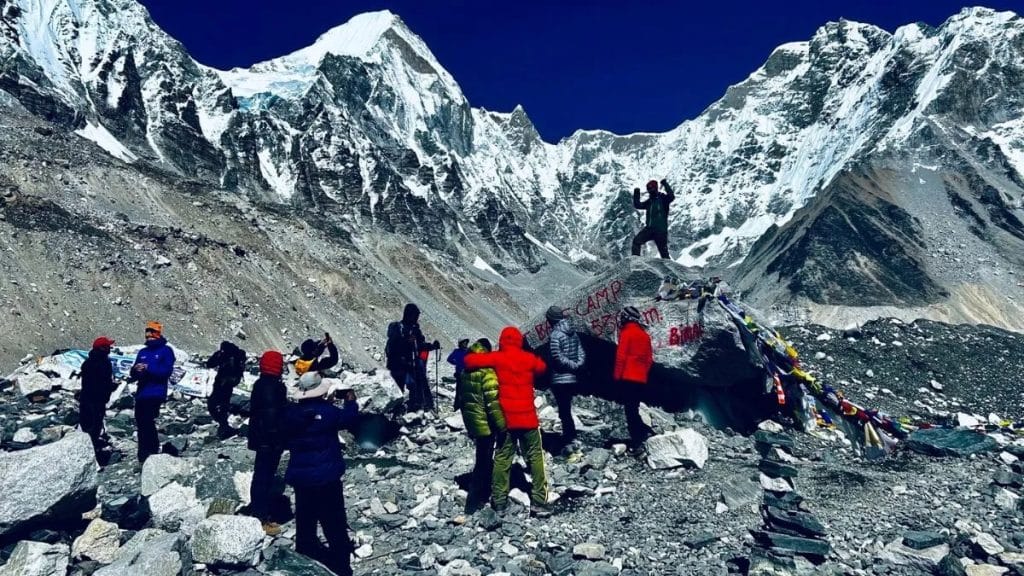The Everest Base Camp Trek is not only a challenging adventure but also an opportunity to explore the rich culture and traditions of the Sherpa people.
Located in the heart of the Himalayas, the trek offers an intimate look at the way of life of those who have long called this rugged region home.
The Sherpa People: Guardians of the Everest Region
The Sherpas are an ethnic group indigenous to the Khumbu region of Nepal, and they are known worldwide for their exceptional mountaineering skills. Their close connection to the land and mountains shapes their identity and culture.
Living in remote villages like Namche Bazaar, Lukla, and Dingboche, Sherpas follow a lifestyle closely intertwined with the harsh but beautiful environment they call home.
The warmth and hospitality of the Sherpa people are integral to the trek, as they welcome visitors with open arms and offer insights into their way of life.
Tibetan Buddhism: The Heartbeat of Sherpa Culture
Buddhism plays a central role in Sherpa culture. Tibetan Buddhism, in particular, influences every aspect of daily life in the Khumbu region.
Along the Everest Base Camp Trek, trekkers will come across monasteries, stupas, and prayer wheels that reflect the deep spiritual connection the Sherpas have with their surroundings.
The sight of prayer flags fluttering in the wind and the sound of Buddhist mantras provide a peaceful backdrop to the trek.
The Sherpas believe that the mountains are sacred, and Mount Everest, known as “Sagarmatha” in Nepali and “Chomolungma” in Tibetan, is considered the abode of the gods.
Living in Harmony with Nature
Sherpas live a life that revolves around nature. Farming, yak herding, and animal husbandry are common livelihoods, and much of the food served along the trail comes from local produce.
Rice, lentils, vegetables, and yak cheese are staple foods in the region. Homes are constructed from stone, built to withstand the harsh conditions of the Himalayas.The architecture is simple, yet functional, and the warmth of Sherpa hospitality makes trekkers feel at home in these remote villages.
The Sacred Connection with Mount Everest
For the Sherpas, Mount Everest is not just a peak to conquer but a sacred mountain that requires respect and reverence. Before any expedition takes place, Sherpas perform rituals to seek blessings from the gods of the mountain.
These rituals and ceremonies are an important part of their spiritual practice and reflect their deep respect for the environment.
Everest is viewed as a place of spiritual power, and climbing it is considered a spiritual journey as much as a physical one.
Wildlife and Biodiversity Along the Trek
The Khumbu region is also home to an array of wildlife that calls the high-altitude landscapes home. While trekking, one may encounter Himalayan tahr, musk deer, and even the elusive snow leopard.
Birds like the Himalayan griffon vulture and blood pheasant add vibrancy to the area, and the sound of rivers and streams rushing through the valleys accompanies trekkers on their journey.
The unique biodiversity of the Everest region is as much a part of the cultural fabric of the area as the people who inhabit it.
Cultural Exchange: Sherpas and the Global Trekking Community
The Everest Base Camp Trek has become a major destination for trekkers from around the world. The Sherpas, who have traditionally guided climbers and trekkers, have become cultural ambassadors, offering trekkers a glimpse into their lives and traditions.
Their hospitality, knowledge, and expertise make the trek not only achievable but deeply enriching.
The Sherpas are essential in ensuring that the trek is safe and enjoyable for all, and their stories and insights provide valuable learning experiences for those willing to listen.
Markets and Handicrafts: The Local Economy
Along the trail, trekkers will find vibrant markets selling local goods such as handmade scarves, hats, jewelry, and traditional crafts.These markets provide a crucial source of income for Sherpa families, and many trekkers enjoy shopping for souvenirs. The products sold in these markets are often crafted from local materials, such as yak wool, and represent the artistic traditions of the region.
For trekkers, buying these handmade goods is a way to support the local economy and take a piece of Sherpa culture home.

